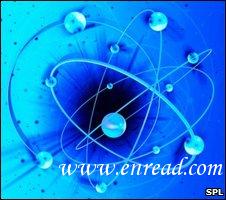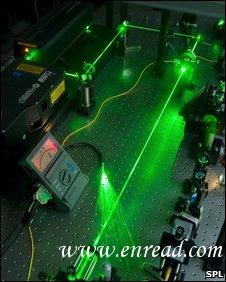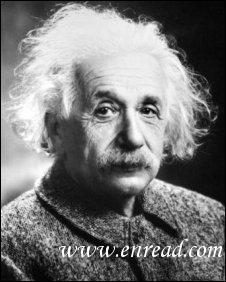| ||||||||||||||||||||||||||||||||||||||||||||||||||||||||||||||||||||||||||||||||||||||||||||||||
|
A molecule1 that until now existed only in theory has finally been made. 到目前为止,理论上存在的分子终于被制造出来。 Electrons can be pictured as orbiting around a central nucleus2 Known as a Rydberg molecule, it is formed through an elusive3(难懂的,易望的) and extremely weak chemical bond between two atoms. The new type of bonding, reported in Nature, occurs because one of the two atoms in the molecule has an electron very far from its nucleus or centre. It reinforces fundamental quantum(分配量) theories, developed by Nobel prize-winning physicist4 Enrico Fermi, about how electrons behave and interact. The Rydberg molecules5 in question were formed from two atoms of rubidium(金如) - one a Rydberg atom, and one a "normal" atom. The movement and position of electrons within an atom can be described as orbiting around a central nucleus - with each shell of orbiting electrons further from the centre. A Rydberg atom is special because it has one electron alone in an outermost7 orbit - very far, in atomic terms, from its nucleus. Back in 1934 Enrico Fermi predicted that if another atom were to "find" that lone6(孤单的,孤立的), wandering electron, it might interact with it. "But Fermi never imagined that molecules could be formed," explained Chris Greene, the theoretical physicist from the University of Colorado who first predicted that Rydberg molecules could exist. "We recognised, in our work in the 1970s and 80s, the potential for a sort of forcefield between a Rydberg atom and a groundstate(基态) [or normal] atom. "It's only now that you can get systems so cold, that you can actually make them." The researchers excite an atom to the "Rydberg state" using a laser Right place, right time Unimaginably cold temperatures are needed to create the molecules, as Vera Bendkowsky from the University of Stuttgart who led the research explained. "The nuclei8 of the atoms have to be at the correct distance from each other for the electron fields to find each other and interact," she said. "We use an ultracold(超冷) cloud of rubidium - as you cool it, the atoms in the gas move closer together." At temperatures very close to absolute zero - minus 273C - this "critical distance" of about 100nm (nanometres - 1nm = one millionth of a millimetre) between the atoms is reached. When one is a Rydberg atom, the two atoms form a Rydberg molecule. This 100nm gap is vast compared to ordinary molecules. "The Rydberg electron resembles a sheepdog that keeps its flock together by roaming speedily to the outermost periphery9(周边) of the flock, and nudging back towards the centre any member that might begin to drift away," said Professor Greene. Pushing this electron out to its lonely periphery - and make a Rydberg atom - requires energy. "We excite the atoms to the Rydberg stage with a laser," explained Dr Bendkowsky. "If we have a gas at the critical density10, with two atoms at the correct distance that are able to form the molecule, and we excite one to the Rydberg state, then we can form a molecule." This ultracold experiment is also ultra-fast - the longest lived Rydberg molecule survives for just 18 microseconds. But the fact that the molecules can be made and seen confirms long-held fundamental atomic theories. "This is a very exciting set of experiments," added Helen Fielding, a physical chemist from University College London. "It shows that this approach is feasible(可行的,可能的), and it will be interesting to see what other fundamental physics we'll be able to test with it." The Bose-Einstein condensation11 was a new way of thinking about matter Prize-winning ideas Professor Greene's prediction that Rydberg molecules could exist was inspired by another Nobel prize-winning piece of physics research. When, in 1924 the Indian physicist Satyendra Nath Bose sent some theoretical calculations about particles to Albert Einstein, Einstein made a prediction. He said that if a gas was cooled to a very low temperature, the atoms would all suddenly collapse12 into their "lowest possible energy state", so they would be almost frozen and behave in an identical and predictable way. In a sense this is analagous to when a gas suddenly condenses(浓缩) into drops of liquid. When scientists reached the goal of Bose-Einstein condensation, by cooling and trapping alkali(碱) atoms, Professor Greene realised that ultracold physics could be used to form molecules that simply would not exist in any other conditions. 点击  收听单词发音 收听单词发音
|
||||||||||||||||||||||||||||||||||||||||||||||||||||||||||||||||||||||||||||||||||||||||||||||||
- 发表评论
-
- 最新评论 进入详细评论页>>






